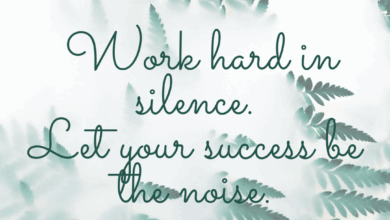Discover inner peace through gentle breathing exercises

Do you ever feel like your mind is racing? Like a runaway train filled with worries, to-do lists, and “what ifs”? You’re definitely not alone. Anxiety is something many of us experience, and it can feel incredibly overwhelming. But what if I told you there was a simple, free tool you could use right now to start finding some peace? It’s not about eliminating anxiety altogether – that’s not realistic – but about learning to relate to it differently. This article will explore the power of mindfulness meditation for anxiety, offering practical exercises and insights to help you navigate those challenging moments and cultivate a sense of calm within. We’ll break down what mindfulness is, how it works, and give you actionable steps to incorporate it into your daily life, even if you’ve never meditated before. It’s about learning to breathe, to be present, and to gently guide yourself back to the now when your mind wanders. Let’s begin your journey to a more peaceful you.
Key Takeaways
- Mindfulness meditation for anxiety focuses on present moment awareness without judgment.
- Simple breathing exercises are a core component of mindfulness practice and can quickly reduce anxiety symptoms.
- Regular practice, even for just a few minutes a day, can significantly improve your ability to manage anxiety.
- Mindfulness isn’t about stopping thoughts; it’s about observing them without getting carried away.
- Body scan meditations can help you become more aware of physical sensations and release tension.
- Loving-kindness meditation can foster self-compassion and reduce self-criticism, often linked to anxiety.
- There are many guided meditation resources available to help you get started with mindfulness.
What is Mindfulness Meditation?
At its heart, mindfulness meditation is about paying attention to the present moment, intentionally and without judgment. It sounds simple, right? But in our busy lives, constantly bombarded with distractions, it can be surprisingly challenging. We’re often caught up in ruminating about the past or worrying about the future, missing out on the beauty and peace of right now. Think of it like this: your mind is a puppy. It’s going to wander, chase squirrels, and get distracted. Mindfulness isn’t about scolding the puppy; it’s about gently guiding it back to your side.
This practice isn’t about emptying your mind – that’s a common misconception. It’s about acknowledging your thoughts and feelings as they are, without getting swept away by them. It’s about creating a space between yourself and your thoughts, recognizing that you are not your thoughts. This distance allows you to respond to situations with more clarity and less reactivity. For those struggling with generalized anxiety disorder, this can be a game-changer.
The Science Behind Mindfulness and Anxiety
So, how does mindfulness actually work to reduce anxiety? Research shows that mindfulness meditation can physically change the brain. Studies using fMRI scans have demonstrated that regular mindfulness practice can increase gray matter density in areas of the brain associated with learning, memory, emotional regulation, and perspective-taking. Specifically, it can strengthen the prefrontal cortex, which is responsible for higher-level cognitive functions like planning and decision-making, and reduce activity in the amygdala, the brain’s “fear center.”
This translates to real-world benefits. Mindfulness helps regulate the nervous system, shifting it from a state of “fight or flight” (sympathetic nervous system) to a state of “rest and digest” (parasympathetic nervous system). This physiological shift can lower heart rate, blood pressure, and cortisol levels – all physical manifestations of anxiety. Practicing mindful breathing techniques, for example, directly impacts the vagus nerve, a key component of the parasympathetic nervous system.
Simple Breathing Exercises for Immediate Relief
One of the most accessible ways to begin practicing mindfulness is through simple breathing exercises. You don’t need any special equipment or training. You can do these anywhere, anytime.
- Diaphragmatic Breathing (Belly Breathing): Place one hand on your chest and the other on your belly. Breathe in deeply through your nose, allowing your belly to rise while keeping your chest relatively still. Exhale slowly through your mouth, feeling your belly fall. Repeat for 5-10 minutes. This technique helps activate the parasympathetic nervous system.
- 4-7-8 Breathing: Inhale deeply through your nose for a count of 4, hold your breath for a count of 7, and exhale slowly through your mouth for a count of 8. Repeat this cycle 4 times. This is a powerful technique for calming the nervous system and promoting relaxation.
- Box Breathing: Visualize a square. Inhale for a count of 4 as you trace one side of the square, hold your breath for 4 as you trace the next side, exhale for 4 as you trace the third side, and hold your breath for 4 as you trace the final side. Repeat several times. This creates a sense of rhythm and grounding.
These techniques are incredibly helpful for managing panic attacks and reducing feelings of overwhelm. They’re like a portable toolkit for anxiety relief.
Body Scan Meditation: Connecting with Your Physical Sensations
A body scan meditation involves bringing your attention to different parts of your body, noticing any sensations without judgment. Start by lying down comfortably. Close your eyes and begin to focus on your breath. Then, slowly bring your attention to your toes. Notice any sensations – warmth, coolness, tingling, pressure. Simply observe, without trying to change anything.
Gradually move your attention up your body, scanning your feet, ankles, calves, knees, thighs, hips, abdomen, chest, back, shoulders, arms, hands, fingers, neck, face, and head. If you encounter any areas of tension, acknowledge them and gently breathe into them.
This practice helps you become more aware of your body and release physical tension that often accompanies anxiety. It’s a powerful way to ground yourself in the present moment and cultivate a sense of embodied awareness. For those experiencing somatic symptoms of anxiety, this can be particularly beneficial.
Loving-Kindness Meditation: Cultivating Self-Compassion
Anxiety often comes with a heavy dose of self-criticism. We beat ourselves up over perceived failures and worry about what others think. Loving-kindness meditation (Metta meditation) is a practice designed to cultivate self-compassion and loving-kindness towards yourself and others.
Begin by sitting comfortably and closing your eyes. Bring to mind someone you easily feel affection for – a loved one, a pet, or a friend. Silently repeat phrases like: “May you be happy. May you be healthy. May you be safe. May you be at ease.”
Then, gradually extend these phrases to yourself, acknowledging your own worthiness of happiness and well-being. Finally, extend these phrases to someone you find difficult, and then to all beings.
This practice can help soften self-criticism, reduce feelings of isolation, and foster a sense of connection and compassion. It’s a beautiful antidote to the harsh inner critic that often fuels anxiety.
Guided Meditations: Resources to Get You Started
If you’re new to mindfulness meditation, guided meditations can be incredibly helpful. They provide structure and support, guiding you through the process. Here are a few resources:
- Insight Timer: A free app with a vast library of guided meditations, talks, and music.
- Headspace: A popular subscription-based app with a structured mindfulness course.
- Calm: Another subscription-based app offering guided meditations, sleep stories, and relaxing music.
- UCLA Mindful Awareness Research Center: Offers free guided meditations and resources on their website: https://www.uclahealth.org/marc/mindful-meditations
Experiment with different teachers and styles to find what resonates with you. Don’t be afraid to try different types of meditation – walking meditation, mindful eating, or even mindful dishwashing!
Incorporating Mindfulness into Daily Life
Mindfulness isn’t just something you do during formal meditation practice. It’s a way of being that you can cultivate throughout your day.
- Mindful Moments: Take a few moments throughout the day to pause and notice your breath, your body, and your surroundings.
- Mindful Eating: Pay attention to the taste, texture, and smell of your food, savoring each bite.
- Mindful Walking: Notice the sensations of your feet on the ground, the movement of your body, and the sights and sounds around you.
- Limit Distractions: Create pockets of time where you can disconnect from technology and focus on the present moment.
These small shifts in awareness can make a big difference in your ability to manage anxiety and cultivate a sense of calm. Remember, it’s not about perfection; it’s about intention.
Dealing with a Wandering Mind
It’s perfectly normal for your mind to wander during meditation. In fact, it’s what minds do. The key isn’t to stop your thoughts, but to notice when your mind has wandered and gently redirect your attention back to your breath or your chosen focus.
Think of it like training a muscle. The more you practice bringing your attention back, the stronger your ability to focus becomes. Be patient with yourself and avoid self-criticism. Acknowledge the thought without judgment and gently guide your attention back to the present moment. This is the core practice of mindfulness.
Mindfulness for Specific Anxiety Types
While mindfulness is beneficial for general anxiety, it can be particularly helpful for specific types:
- Social Anxiety: Mindfulness can help you observe your anxious thoughts and feelings in social situations without getting caught up in them.
- Health Anxiety: Mindfulness can help you detach from catastrophic thoughts about your health and focus on the present moment.
- Panic Disorder: Breathing exercises and body scan meditations can help you manage the physical symptoms of panic attacks.
- Obsessive-Compulsive Disorder (OCD): Mindfulness can help you observe your obsessive thoughts without engaging in compulsive behaviors. (Note: Mindfulness should be used in conjunction with professional treatment for OCD.)
Troubleshooting Common Challenges
- “I don’t have time.” Start with just 5 minutes a day. Even a short practice can be beneficial.
- “I can’t clear my mind.” Remember, the goal isn’t to clear your mind, but to observe your thoughts without judgment.
- “I feel more anxious when I meditate.” This is common, especially at first. Be patient with yourself and start with shorter meditations. If it persists, consult with a qualified mindfulness teacher.
- “I get frustrated when my mind wanders.” Acknowledge your frustration and gently redirect your attention back to your breath.
Conclusion
Mindfulness meditation for anxiety isn’t a quick fix, but a powerful tool for cultivating inner peace and resilience. It’s a journey of self-discovery, requiring patience, compassion, and consistent practice. By learning to pay attention to the present moment without judgment, you can begin to break free from the grip of anxiety and live a more fulfilling life. Remember to start small, be kind to yourself, and celebrate your progress along the way. Take a deep breath right now, and commit to just five minutes of mindfulness today. Your mind – and your well-being – will thank you. Don’t hesitate to explore the resources mentioned and find what works best for you. You deserve to feel calm and centered.
FAQs
Q: Is mindfulness meditation the same as emptying my mind?
A: No, absolutely not! Mindfulness isn’t about stopping thoughts. It’s about observing them without getting carried away, recognizing that you are not your thoughts. It’s about creating space between yourself and your internal experience.
Q: How long do I need to meditate to see results?
A: You don’t need to meditate for hours to experience benefits. Even 5-10 minutes a day can make a significant difference. Consistency is key. Regular practice of mindfulness meditation for anxiety is more important than the length of each session.
Q: What if I get distracted during meditation?
A: It’s completely normal for your mind to wander! When you notice your attention has drifted, gently redirect it back to your breath or your chosen focus. Don’t judge yourself for getting distracted; it’s part of the process.
Q: Can mindfulness meditation help with panic attacks?
A: Yes, mindfulness can be a valuable tool for managing panic attacks. Breathing exercises and body scan meditations can help you calm your nervous system and reduce the physical symptoms of panic.
Q: Are there any side effects to mindfulness meditation?
A: Mindfulness meditation is generally very safe, but some people may experience temporary discomfort as they become more aware of their thoughts and feelings. If you have a history of trauma or mental health challenges, it’s best to practice mindfulness under the guidance of a qualified professional.
We hope this article has inspired you to explore the benefits of mindfulness meditation for anxiety. Please share your experiences and thoughts in the comments below! If you found this helpful, please share it with your friends and family who might also benefit.
Hi, I’m Sophia! Welcome to my blog Try Stress Management (trystressmanagement.com), where I share simple, down-to-earth ways to handle stress and bring more calm into everyday life. Think of me as your friendly guide, offering practical tips, reflections, and little reminders that we’re all figuring this out together.
When I’m not blogging, you’ll usually find me with a good book, sipping tea, or exploring new walking trails. I believe small changes can make a big difference—and that a calmer, happier life is possible for everyone.




